So by now I’m sure you’ve figured out how much I love FREE CLAY!!!
I’m not afraid of a little reclaiming. I always have a large bucket of scraps slaking down to become a new, fresh batch of clay.
But what to do when you have a whole block of 25 pounds TOTALLY DRY?!!!
I had received a couple solid blocks of dried porcelain from a friend who doesn’t do much reclaiming. In my mind I thought I would be breaking it all down, pounding it down, pulverizing and working on it forever. That was a lot of labor in my mind for a project that I kept putting off. Until now…
So I saw a video online about a “trick” to rehydrate the whole block of dried clay…
THE EASY WAY!!! Easy?…I’m in!
So I started with the solid blocks of clay. I double-bagged each of them in case there was a hole in the original bag. I then added a water bottle full of water. The video says to add one cup of water for a 25 pound block. I of course had not remembered the specifics… so I just threw in a full water bottle of water. I then sealed up the bags as tight as possible. And then submerged each block into a water-filled five gallon bucket. The video says to leave it for about two weeks… but I got busy, distracted, and they were in the buckets closer to three weeks!

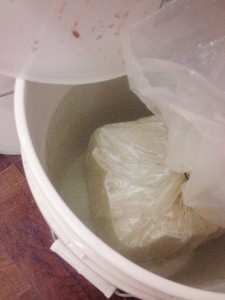

Still don’t know how much water I actually put in… but here’s my water bottle.

After three weeks, I pulled the bags out of the water, opened them and sliced through the block of clay. It was amazing how much the clay had rehydrated. The center of the block was still a bit crunchy, so I just assumed I had not put in enough water originally. So I added another 1/2 bottle of water into each bag. Tied them back up and submerged them for another week.
Okay, back out of the water, and ready to check the clay…
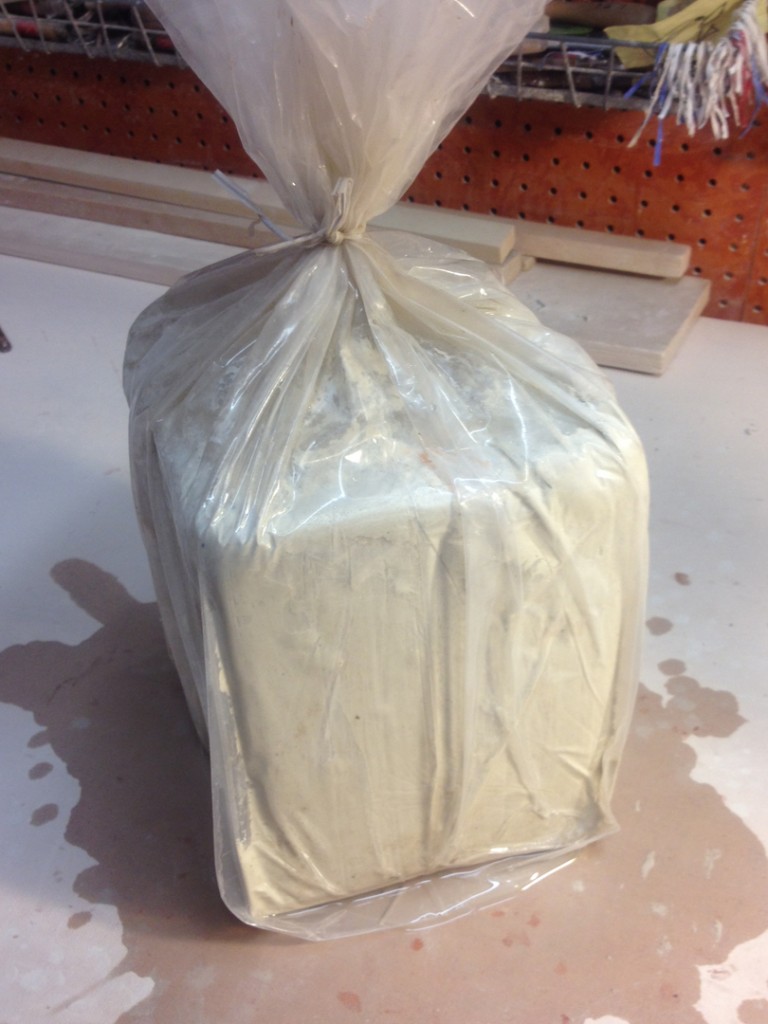
Just upon opening the bag, you could see right away that the clay was SO much better…
and no longer the solid block of bone dry clay it had been!
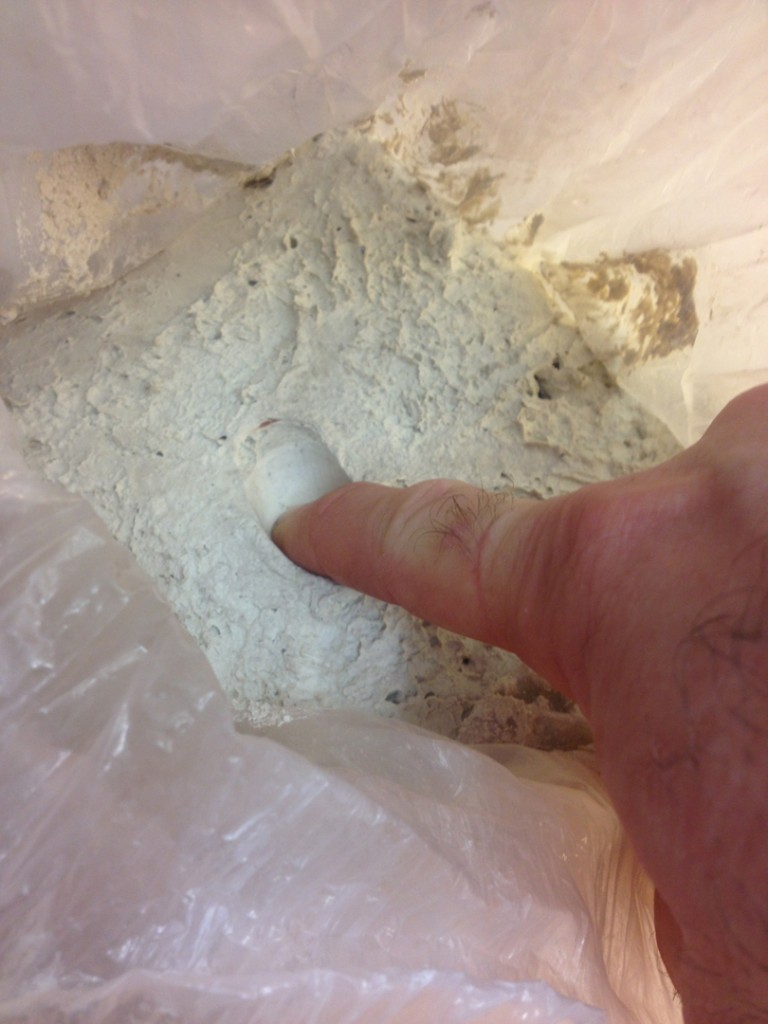
After cutting it in half, I was excited to see that the porcelain was all back to usable clay! Sure, it might need a bit of wedging to get it all back to normal, but SO much better than having to break it all down and reclaiming the old-fashioned way!
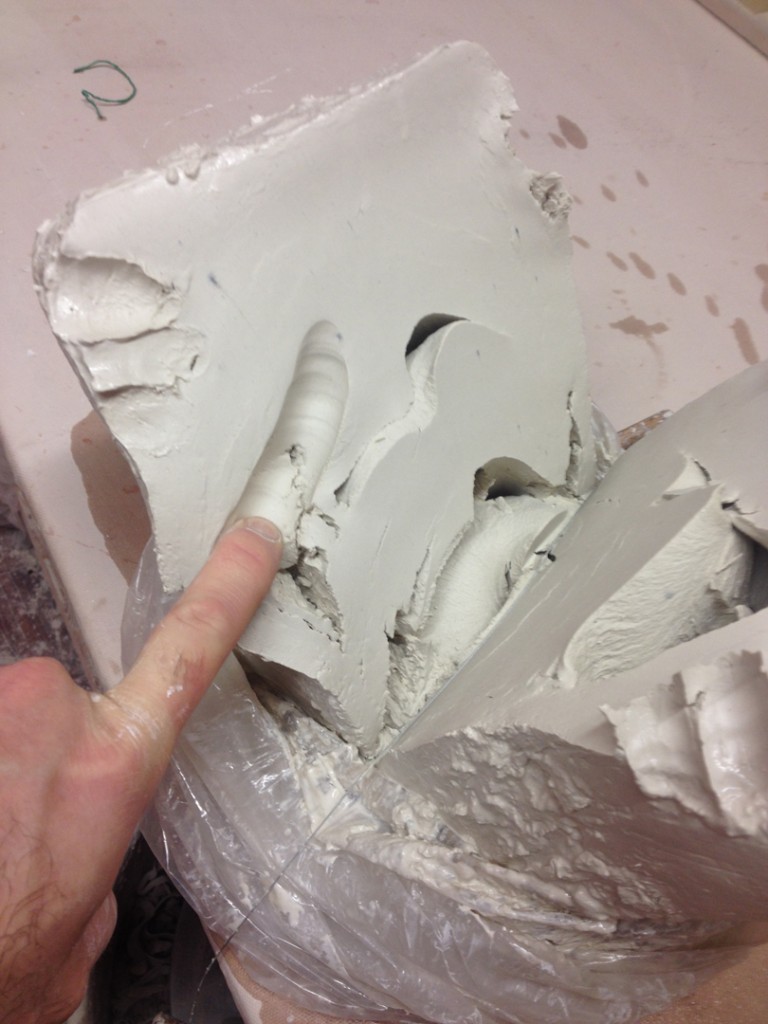
And the terra cotta looked good too. This one was especially rewarding, as the solid block of bone dry terra cotta was all my fault. It was reclaimed terra cotta in the first place. I had let the trimmings dry, added water and let it slake down the old-fashioned way. When it was ready to turn out onto a plaster bat, I got too busy… and kinda just kept putting it off. Apparently. Fast-forward a couple months of procrastinating and voila’… a solid bucket of BONE DRY terra cotta!!! All my own fault!!!
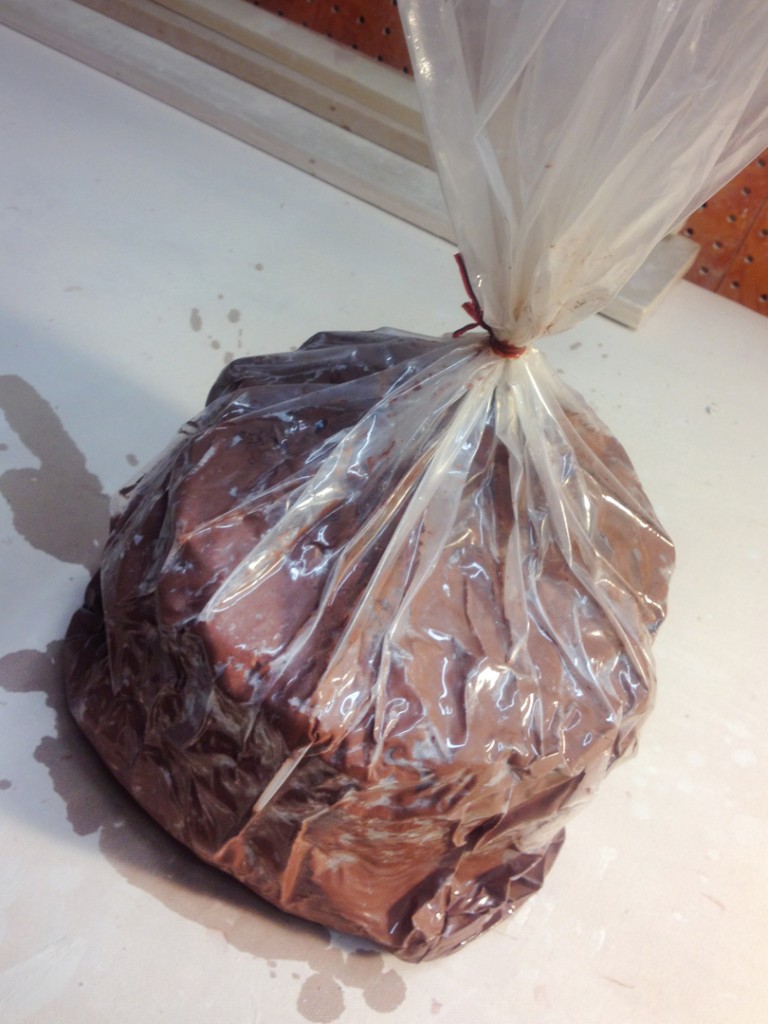
Bag out of the water… cut in half… and again, perfectly rehydrated clay!!!

So this new trick is pretty darn amazing. And it adds a whole new level of “fun” to my free clay reclaiming endeavors. I would highly recommend it for anyone who finds themselves with solid chunks of clay that just seem daunting to reclaim the normal ways.
Intrigued?… Still think it’s too good to be true?…
Click here to see the YouTube video by Janis Wilson Hughes of Evolution Stoneware Pottery.
Hey Gary, do you add any chemicals to your reclaim? All my used clay goes into garbage can until 1/2 full then I put on board to slake.Unfortunately, I get bubbles when glazed and fired. Do you bisque the ware at a different temp? Hopefully, I make some sense.
HEY PATSI –
I do not add any extra chemicals to my reclaim. But I do try hard to make sure I am adding all of the fine clay particles back in as well. When most people throw on the wheel, a lot of the fine clay “slurry” gets washed away. And then the water in their throwing buckets gets thrown away and washes down the clay sink. I prefer to always use the same bucket for my throwing water. And when it’s about 1/2 full with settled clay, I stir it up and add the slurry and water to my reclaim bucket. I also don’t clean my splash pan in between throwings. I let the slurry dry up and toss those chunks into the reclaim bucket as well. I think that if you keep washing all of the fine clay particles away, your clay will get “short” and not as elastic as you would like it to be. If I feel that my reclaim clay has been “used a few too many times”, I will occasionally layer it and wedge it together with a new bag of clay… but not very often. Not that any of this is proven or scientific… but it’s what I do. And it seems to be working. I hope this helps. GARY
[…] Link […]